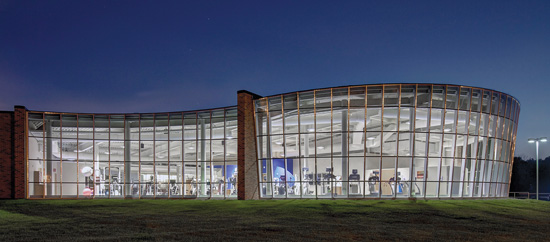The Health and Design Benefits of Accessing Daylight and Views with Dynamic Glass
Characteristics of Daylight
Daylight is a dynamic light source that is unmatched in terms of the power, variability, and complexity of the light it provides. Daylight spans an exceptionally broad range of intensities, impacted both by the time of the day and weather conditions, with a color composition that changes regularly throughout a 24-hour cycle.
Dynamic Intensity
Time of day, time of year, and daily weather all affect the intensity of the daylight incident on a window at any given moment, giving the intensity of daylight the characteristic of constant change and a certain degree of unpredictability. Outdoor daylight illuminance can range from 120,000 lux for direct sunlight at noon, which is enough to cause eye pain, to less than 5 lux under thick storm cloud cover. The position of the sun relative to any window changes throughout the day and year as the Earth rotates around its own axis and the sun. Clear or cloudy sky conditions also influence the intensity of available daylight, as can obstructions and reflections in the immediate environment. This variability and unpredictability of solar intensity provides a challenge for the building designer in controlling the amount of the sun’s heat and light entering the building.
The Dynamic Spectrum of Daylight
Visible light has a wavelength range from 400 to 700nm. Violet, indigo, and blue light exist at wavelengths from 400 to 480nm; green light has a wavelength of around 510nm; and red and orange light have wavelengths from 590 to 700nm. White light is a mixture of all of the colors of the visible spectrum. The color of the light perceived by the human eye depends on the relative intensities of each wavelength seen. Although daylight appears essentially neutral like white light, the balance of color (or spectral power distribution) actually changes as a function of the position of the sun in the sky, on the sky conditions (cloudy sky or cloudless sky). For example, daylight has a higher blue component in the morning and a higher red component as the sun sets.

Photo courtesy of SageGlass/Phil Daubman Photography










